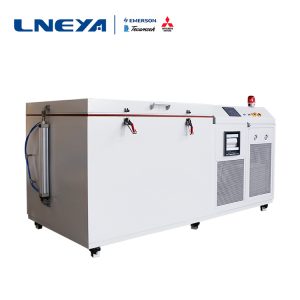Test of working temperature of electric vehicle power battery
The normal working temperature
range of power batteries for electric vehicles is -30 ~ 52 ° C, and the working
temperature range is -46 ~ 66 ° C, which is difficult to achieve with existing
power batteries. Although local warming measures can be used for battery packs,
they increase costs. Each type of battery has an optimum operating temperature
range, beyond which battery performance will be reduced or impaired. Therefore,
before the production of power batteries, manufacturers need to perform related
temperature tests or inspection agencies to perform similar tests.
The cooling and heating
system components of electric vehicles must be tested at different pressure
levels and temperatures. The performance and power consumption of these systems
must be tested to ensure that they do not significantly reduce the mileage of
the vehicle. In a typical test, a complete auxiliary heater or component, such
as a valve, hose, and other hollow valve, is inserted into a test slot on a
pressure cycle table.
A cooling circuit is
usually tested in a temperature range of minus 40 to 20 degrees, while a
heating circuit is tested in a temperature range of 20 to 140 degrees. Power
consumption and performance are usually tested at alternating temperatures.
Low-voltage or high-voltage power sources can be selected, and operation can be
simulated with on-board batteries and generators or traction accumulators. In
many electric vehicles today, heating and cooling systems can drain the
battery, negatively affecting the mileage of the car. By comparing the test
results before and after the load test on the pressure cycle test bench, we can
see how the change in battery power consumption and performance affects the
service life of the vehicle.
A comprehensive
long-term test usually takes 20 to 30 days, depending on how often the load
changes. The temperature and volume flow of the test medium and the ambient
temperature (if the test takes place in a climatic chamber) vary according to
the test specifications. The temperature and flow rate, pressure, and pressure
drop of the inlet and outlet of the test object circuit are continuously
measured. The test here focuses on the thermal and electrical performance of
the heating and cooling device under different environmental conditions.
Lneya’s new energy battery cooling
and heating system KRY series is widely used in production lines or testing
departments of related companies in China. The temperature control precision is
high, and the single fluid medium temperature control saves resources and
costs.
(The relevant information comes from the
Internet. If you have any questions, please contact the editorial department.)
관련 권장 사항
-
히터에 역류를 추가하면 겨울철에도 언제 어디서나 온수가 나옵니다.
1012The principle is also simple. A water pipe is added at the outlet of the hot water pipe to form a closed circuit. The recirculation pump is connected to the water heater. When the tap is turned on, the circulating pump automatically pumps the col...
세부 정보 보기 -
칩 생산 고온 및 저온 에이징 테스트 챔버의 기능은 무엇인가요?
1039현재 칩 웨이퍼 생산 업계는 전례 없는 도전과 변화에 직면해 있습니다. 기술 외에도 생산량은 항상 업계의 관심사였습니다. 칩의 탄생에는 많은 공정이 필요하고 좋은 칩이 필요하다는 것을 우리 모두 알고 있습니다.
세부 정보 보기 -
Motor test bench test and temperature system for vehicle components
1408All vehicle components must undergo rigorous testing, but safety programs must undergo more stringent durability and terminal testing. Many physical methods can be used to load the motor, but the small motor test bench is favored for its high spee...
세부 정보 보기 -
Advantages of bearing cryogenic treatment equipment
1183One of the names of the ultra-low temperature freezer is the bearing cryogenic treatment equipment. Wuxi Guanya LNEYA's ultra-low temperature freezer is designed for large volume ratio; large capacity bearing capacity design; can set the temperatu...
세부 정보 보기
 LNEYA 산업용 냉각기 제조업체 공급 업체
LNEYA 산업용 냉각기 제조업체 공급 업체













